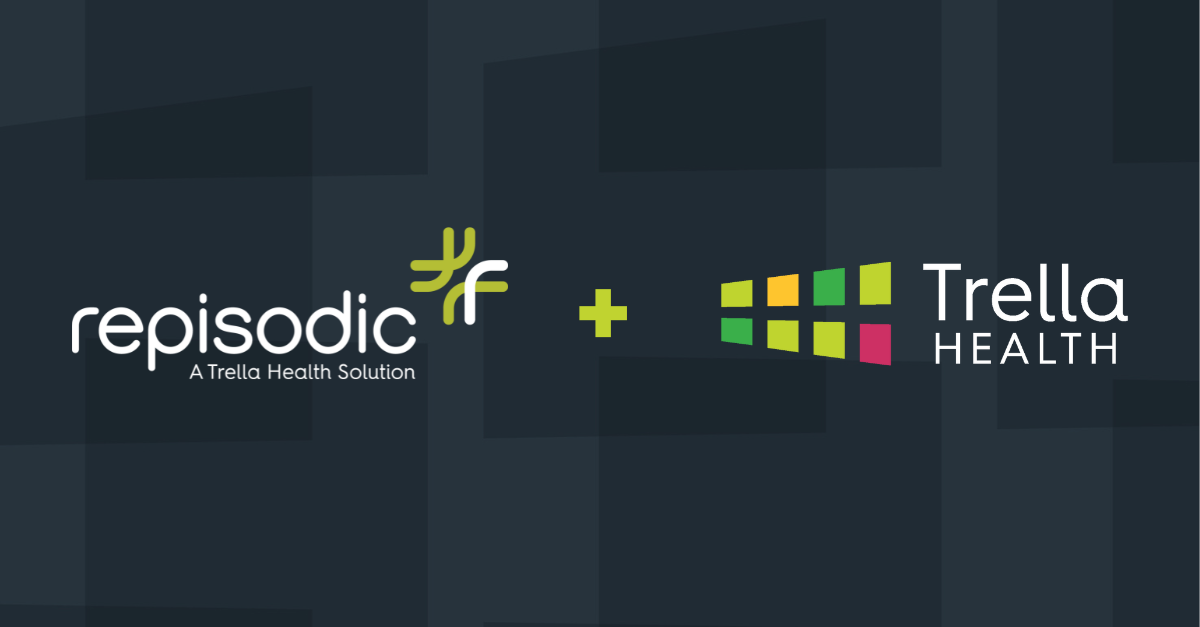Ashton Harrison, Marketing Engagement Manager
With a diverse background of sales and healthcare marketing, Ashton manages Trella’s events, press releases, and media and association relations. After graduating from Florida State University with a major in communications, she began her career at Greenway Health, a EHR company, where she found her passion for the healthcare industry. At Trella Health, she’s able to do all the things she loves about marketing — engaging at events, interactions with partners, and creating marketing pieces that share insight on Trella’s journey.Best Practices for Post-Acute Business Development Teams
By Ashton Harrison | May 5, 2021
In light of the pandemic and industry changes, post-acute agencies have been forced to re-evaluate their sales and marketing practices to stay connected to referral partners. A component of this is forging new partnerships and utilizing key metrics and technology to accelerate growth within increasingly competitive markets.
In our recent webinar with Home Health Care News, Trella’s VP of Customer Success, Andy Powell, spoke with three joint Trella Health and Enquire customers regarding best practices for their sales team to be successful. The three customers were:
- Andrew Salmon, Owner and Director of Network Development for Salmon Health
- Molly Holmes, VP of Sales for Knute Nelson
- Jonathan Lew, Director of Referral Management for Plum Healthcare
On the webinar, the speakers discussed three topics:
- Best practices for successful business development strategies
- Using tools and data to build and expand partner networks
- Plans for future initiatives to grow their agencies’ presence
Topic 1. Best Practices for Successful Business Development Strategies
While many post-acute care organizations suffered through the pandemic, Molly Holmes noted, “Knute Nelson served more individuals last year than we had in the previous years.” She attributed much of that success to a willingness to adapt to new best practices. When business development reps and sales executives couldn’t make face-to-face calls due to quarantines and shelter-in-place orders, the team shifted its focus to virtual resources.
Now, as facilities reopen, Holmes pointed out the importance of learning from the past year and applying effective business development strategies moving forward. “I think there is going to be a balance to strike as organizations determine when face-to-face meetings are important and when it’s more efficient and effective to schedule a Zoom meeting, a phone call, or an email instead. “There are a lot of opportunities for us to really reevaluate and say, ‘Do we really need to spend all that unproductive time driving to and from facilities?’”
Jonathan Lew of Plum Healthcare discussed his organization’s reaction to an almost-immediate downturn in referrals. “We saw [referral volume] shrink by 45%. And then we saw the number of admitting locations shrink by about 15%. So, we were able to quickly understand and quantify the impact of our referral sources very early on.” Understanding the need to stay in front of referral sources, Jonathan’s team focused on Plum’s most loyal referring accounts, the facilities that had shown the most trust in Plum pre-pandemic and tried to keep the line of communication open with those organizations.
At the same time, Lew stressed the importance of understanding why they had lost that 15% of admitting locations. Before the pandemic, Lew said, his agency had taken a more “anecdotal approach,” assuming those referring relationships were strong and in good standing. The global health emergency gave post-acute care providers an opportunity to explore those relationships, examine the data, and set new benchmarks for performance and referrals. That exploration has paid off for Plum. “We’re 20% larger from an admitting location perspective than we were even pre-pandemic.”
Building on that, Andrew Salmon of Salmon Health noted the importance of collaboration, and the opportunities that have opened in response to the pandemic. With the need for social distancing and other factors in play, a lot of administrators and leaders had to let go of their old, strongly held ideas about how to develop their businesses. “A couple of years ago, it was really challenging to have those conversations about how to push a building or a clinical program or a service line into a building when it wasn’t necessarily the status quo. I think generally my audience has been a lot more open to new and novel ideas than they were previously. So, it’s been really refreshing in that regard.”
Topic 2. Using tools and data to build and expand partner networks
Post-acute organizations have an opportunity to leverage technology to expand their partner networks and increase referrals. Pointing out that even pre-pandemic, organizations have needed to reimagine traditional marketing and business development approaches, Lew said, “technology like Trella and Enquire CRM allow us to effectively analyze the drivers behind poor performance, poor response times, poor acceptance rates, and has allowed us to drill down into the root causes. Do we have a viable and functional weekend and after-hours process in place, and are we showing the same commitment to our out-of-market referral sources as we work to our in-market referral sources?”
Salmon also emphasized the value of using market data to build relationships with referring partners. “We have great partners, and we always want to do the right thing by them. It’s really about understanding what their needs are and beginning to align our practices to support them.”
Access to performance metrics data gives insight into areas for improvement. “If we lost the referral to the competitor,” Lew said, “we want to understand the drivers and the levers behind that. Was it because we weren’t meeting some clinical competency? Did we not have the value proposition with our clinical outcomes compared to in-market competitors? Trella’s insights gave us the ability to analyze, not only the business that we were getting, but to really understand the business that we weren’t getting – so we could meet the value of that market. Trella is really the confirmation that your efforts resulted in market share growth.”
Topic 3. Plans for future initiatives to grow agencies’ presences
With new benchmarks and best practices, along with the technology to measure and monitor key metrics, post-acute care organizations are now positioned to not only recover and return to previous referral capacities, but to grow and expand their presences. What are leading organizations and agencies doing to grow?
Lew highlighted the need for “innovation and operational urgency around finding new ways to support our communities.” Diversifying service offerings and focusing on needed specializations, Lew pointed out, allows organizations to be successful in their regions and spaces through and beyond the pandemic.
Salmon added to this, focusing on the need to empower business development representatives to make decisions and work agilely across communities. Giving representatives more freedom to act “makes them the go-to liaison in that hospital to solve any issue that folks have.” This builds trust between organizations and their referring partners and can go a long way to increasing conversions.
For many organizations, now is the perfect time for strategic reorganizations to enhance efficiency. According to Lew, Plum Healthcare is currently going through this process, and is focused on updating its old business development model to avoid “cluster markets.”
“We really want to get away from [multiple reps] all working on behalf of an individual facility and all calling on the same customer for the same patient. I think everyone realizes the inefficiency of that.” Further, as it’s gotten more difficult to meet discharge planners face-to-face (even pre-pandemic), “We want to make sure that when we get in front of those discharge planners and decision-makers that we’re making the most efficient use of our time.” That means giving reps more agency to represent the organization and manage patient referrals at any of the organization’s care settings. This approach enhances efficiency and saves time for post-acute care organizations and referring partners.
For Salmon Healthcare, “We’re seeing a massive shift into the community-based services. Our continuum is defined by supporting seniors throughout the aging process by minimizing their weaknesses and maximizing their strengths. To support seniors where they are is important, and support them under the highest regulation as well, meaning, having the VNA allows us to go in and do skilled care wherever, and it gives the customer the knowledge that DPH and CMS are overseeing.”
For organizations just entering the care coordination space, Holmes says, “We’ve recently brought on an internal team member to really help throughout our continuum, to say, ‘Let’s evaluate your needs. Let’s do some discovery and figure out the best place for you within our continuum and not just put you in a box in one service line or another.’” Taking this step empowers organizations to better serve patients’ needs, breaking down walls between silos and enhancing care coordination.
As organizations develop their three- to five-year plans, they should focus on differentiators – how to develop them and how to market them. “Right now, we have new buildings in place with private suites,” Holmes said, “We’re going to focus on exclusively short-term transitional care and accommodating those infectious diseases if there’s another pandemic around the corner.”
By tracking key performance metrics, organizations can get a clear view of where they stand out, which services they should build upon, and where there may be gaps in their region to expand into. With analytics tools like Marketscape and Marketscape Strategy by Trella Health, post-acute care organizations have the power to identify those gaps based on evidence, rather than anecdotal assumptions.
For more from these post-acute leaders, check out the full conversation in our webinar. To see how a tool like Marketscape or Marketscape Strategy can help your organization expand its referring network, request a demo today.















